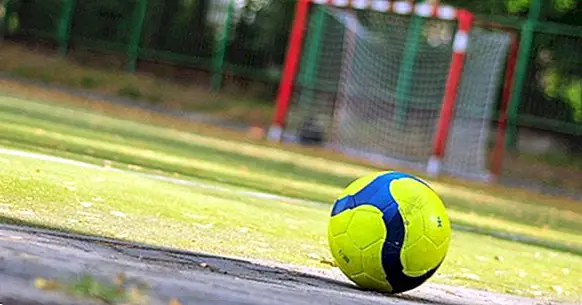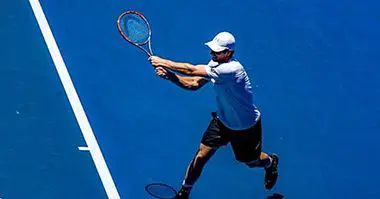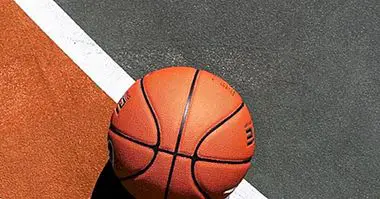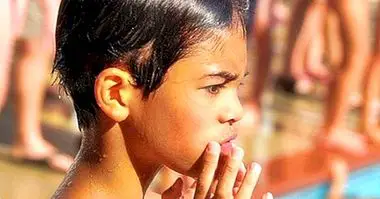Objectives in sport: how to quickly improve sports performance
Today, there are many variables that make an athlete evolve within his discipline . We could talk about concentration, motivation, perseverance, dedication or commitment.
In this case, we will focus on a way to progress quickly and effectively through the establishment of objectives. Both researchers and sports psychologists and coaches agree that establishing short, medium and long term goals is totally effective to improve the athlete's abilities, as well as to maintain motivation.
The importance of setting goals
This strategy is not a new idea; In other areas, such as in the company or in organizations, it has been used for a long time. A clear example would be the achievement of incentives or awards, as a worker achieves certain objectives for the company.
But nevertheless, the use of systematically setting objectives in the training of athletes has been implemented more recently, and with excellent results .
Numerous investigations support the effectiveness of goal setting as a motivating technique and strategy that improves performance optimally.
Defining the term "objective"
An objective or goal is defined as the acquisition of an optimal level of performance in a specific task and in a pre-established time interval. From the perspective applied to sport, this strategy refers to the achievement of certain domains of a task that increase sports performance, such as the improvement of a swimmer's personal brand in the face of a championship.
When talking about the establishment of objectives or goals, we refer to designing a training plan focused on the achievement of small advances or steps, to achieve mastery of a certain skill. Further, The main advantage of this procedure of setting goals or objectives , is that the establishment of tasks to master certain skills of a sport in a short period of time, implies that we compete with ourselves and motivate ourselves to overcome our own brands or limits.
Some mechanisms of the motivation process that are put into action are:
- Focus attention on the important aspects of the task , ignoring external variables that may disturb the activity.
- Start up the necessary energy to reach the domain of the trained skill.
- Activate other variables , like the perseverance before the error or before the non achievement of this objective.
- Have a wide range of resources that allows the athlete to succeed in any given situation in the sports competition.
- The self-realization that is achieved, once you exceed the objectives set beforehand.
Classification of goals
The objectives or goals can be divided according to different aspects. For example, depending on the period in which they are carried out, we would be talking about short, medium and long-term objectives .
Short-term goals
The goals or short-term goals , they are programmed to be achieved in a week of training. For example, that an athlete manages to lower his own personal mark in 1 second during the whole week of training.
Medium-term goals
The medium-term goals they are planned to be achieved in one or two months. For example, that an athlete manages to establish brands that allow him to compete in major events such as national or international championships.
Long-term goals
The long-term goals are those that are established with a view to an annual season. For example, that an athlete manages to compete with the best in an Olympiad.
The importance of collective objectives
There are objectives or goals referring to the athlete himself within a group or team. A team is a sum of individualities made available to the group. So, the improvement in the performance of the individual will cause an improvement in the performance of the team .
The objectives set for the athlete implies that he concentrates better on what he has to do in each moment to achieve the final goals. Therefore, these are aspects that are individually trainable and that will favor the collective. As for example, the forward who is proposed in each training put a certain number of goals.
However, there are aspects that are only trainable at the collective level. For example, the defensive mechanism of a rugby team has to be perfectly coordinated so that, in this way, it is effective.
In summary, When we talk about goals or objectives referring to teams, each individual must put all their abilities to improve individually and collectively , having to be both compatible.
Characteristics of the objectives or goals
For the establishment of goals or objectives to achieve desirable results, the following must be respected.
- The objectives that must be achieved must have a certain threshold of difficulty , taking care of the abilities of the athlete in a realistic way.
- They must be concrete (For example, lower my brand one second in two weeks), since these work better than general aspects. (I'll do the best I know).
- They must be tangible characteristics , that can be measured. (Score five goals in a training match).
- Focus the objectives in positive terms ; since focusing on achieving success implies focusing on the achievement, rather than on avoiding failure.
In short, the setting of objectives or goals within the training of any athlete, helps in an important way to improve their own skills and, therefore, the progress of it, overcoming limits that neither the individual was aware of shake.



















